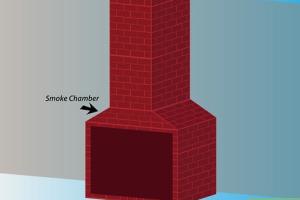Ultimate Guide to Building a Chimney: Step-by-Step Instructions and Expert Tips

-
Quick Links:
- Introduction
- Planning Your Chimney
- Essential Materials
- Laying the Foundation
- Building the Chimney Structure
- Installing the Flue
- Capping the Chimney
- Finishing Touches
- Case Studies
- Chimney Maintenance
- FAQs
Introduction
Building a chimney might seem daunting at first, but with the right guidance and materials, it can be a rewarding project. Not only does a well-built chimney enhance your home's functionality, but it also adds to its aesthetic appeal. In this guide, we will walk you through the entire process of building a chimney, from planning to maintenance.
Planning Your Chimney
Before you start, planning is crucial. Here are some considerations:
- Location: Choose a location that allows for proper venting and is away from combustible materials.
- Building Codes: Check local building codes and regulations to ensure compliance.
- Chimney Type: Decide on the type of chimney you want to build (masonry, metal, etc.).
- Design: Sketch out a design that meets your needs and complements your home.
Essential Materials
Gather the following materials before you begin:
- Bricks or blocks for the chimney body
- Cement and mortar
- Flue liner (if applicable)
- Chimney cap
- Insulation (optional)
- Tools: trowel, level, measuring tape, and safety gear
Laying the Foundation
A strong foundation is essential for your chimney's stability. Follow these steps:
- Mark the area for the foundation.
- Excavate to a depth of at least 12 inches.
- Pour concrete to create a solid base.
- Allow the foundation to cure for at least a week.
Building the Chimney Structure
Once the foundation is set, you can start building the chimney:
- Start with the first layer of bricks, ensuring they are level.
- Apply mortar between bricks, using a trowel.
- Continue layering bricks, staggering the joints for added strength.
- Periodically check for level and plumb.
Installing the Flue
The flue is essential for directing smoke and gases outside. Here's how to install it:
- Measure and cut the flue liner to fit inside the chimney.
- Position the flue liner in the center of the chimney.
- Seal any gaps with mortar or insulation.
Capping the Chimney
A chimney cap prevents debris and rain from entering. Follow these steps:
- Select a cap that fits your chimney design.
- Secure the cap with screws or mortar.
Finishing Touches
To complete your chimney, consider the following:
- Apply a weather-resistant sealant.
- Paint or finish the exterior as desired.
Case Studies
We gathered insights from several homeowners who built their chimneys. Here are their experiences:
Case Study 1: The DIY Enthusiast
John, an avid DIYer, built a masonry chimney that added value to his home. He emphasized the importance of proper planning and following local codes.
Case Study 2: The Professional Builder
Sarah, a professional builder, noted the efficiency of using pre-fabricated flue liners. Her tips included ensuring a proper seal for preventing leaks.
Chimney Maintenance
Regular maintenance is crucial for a safe and functional chimney:
- Inspect the chimney annually for cracks or signs of wear.
- Clean the flue regularly to prevent creosote buildup.
- Ensure the cap is intact and free from debris.
FAQs
1. How long does it take to build a chimney?
Building a chimney can take anywhere from a few days to a couple of weeks, depending on the complexity and weather conditions.
2. Do I need a permit to build a chimney?
Yes, most localities require a permit for chimney construction. Always check your local regulations.
3. What is the best material for a chimney?
Masonry bricks and concrete blocks are popular for their durability and heat resistance.
4. How often should I have my chimney inspected?
It’s advisable to have your chimney inspected at least once a year.
5. Can I build a chimney myself?
Yes, with the right knowledge and tools, many homeowners successfully build their chimneys.
6. What safety precautions should I take?
Always wear safety gear, work in a well-ventilated area, and consider hiring a professional for complex tasks.
7. How do I know if my chimney needs repairs?
Look for cracks, water damage, or poor draft as signs that your chimney may need repairs.
8. Can I install a chimney liner myself?
While it’s possible, hiring a professional is recommended to ensure proper installation and safety.
9. What is the cost of building a chimney?
The cost can vary widely based on materials and design, ranging from $1,500 to $5,000 or more.
10. What are the benefits of a chimney cap?
A chimney cap prevents animals, debris, and rain from entering while also reducing downdrafts.
Conclusion
Building a chimney is a substantial investment in your home. By following this comprehensive guide, you can create a durable and functional chimney that enhances your property's value and safety. Remember to prioritize safety, adhere to local codes, and conduct regular maintenance for the best results.
External References
- National Fire Protection Association (NFPA)
- HUD Home Improvement Guidelines
- EPA Guide to Chimney Maintenance
- Building Code Resources
Random Reads
- How to clean yellowed discolored plastic
- How to clean wrought iron
- How to install a water softener
- How to install a washing machine
- How to install inwall air conditioner
- How to enable attribute editor tab active directory windows
- How to subnet a class c network
- How to strip coax cable
- Quick ways to turn off iphone
- Simple ways to clean laptop keyboard keys